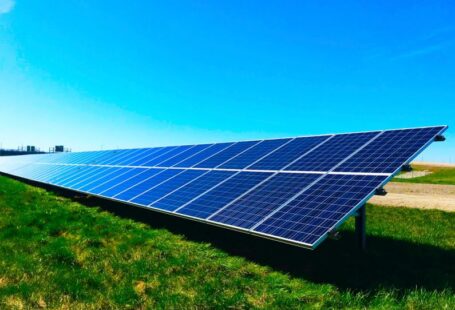Solar panels have become increasingly popular in recent years as a sustainable and cost-effective way to generate electricity for homes and businesses. One common question that arises when considering investing in solar panels is, “How long does it take to recover the investment?” Understanding the financial aspects of solar panel installation is crucial for making an informed decision about whether it is a worthwhile investment in the long run.
**The Initial Investment**
The initial cost of installing solar panels can vary depending on factors such as the size of the system, the quality of the panels, and the complexity of the installation. On average, the cost of a residential solar panel system can range from $15,000 to $25,000 before any incentives or rebates are applied. While this initial investment may seem high, it is essential to consider the long-term savings that solar panels can provide.
**Savings on Energy Bills**
One of the primary benefits of installing solar panels is the potential savings on energy bills. By generating your electricity from the sun, you can significantly reduce or even eliminate your monthly electricity costs. The amount of money saved will depend on factors such as the size of the system, your energy consumption, and the amount of sunlight your location receives. On average, homeowners can expect to save hundreds or even thousands of dollars per year on their energy bills with solar panels.
**Return on Investment (ROI)**
The return on investment (ROI) for solar panels is calculated by dividing the total cost of the system by the annual savings on energy bills. The ROI timeline can vary depending on factors such as the cost of electricity in your area, available incentives, and the efficiency of your solar panels. On average, most homeowners can expect to recoup their initial investment in solar panels within 5 to 10 years.
**Incentives and Rebates**
To help offset the initial cost of solar panel installation, there are various incentives and rebates available at the federal, state, and local levels. These incentives can include tax credits, rebates, and other financial incentives that can significantly reduce the upfront cost of going solar. By taking advantage of these incentives, homeowners can shorten the payback period for their solar panel system.
**Long-Term Savings**
While the upfront cost of solar panels may seem daunting, it is essential to consider the long-term savings that solar energy can provide. Solar panels have a lifespan of 25 to 30 years, meaning that once the initial investment is recouped, homeowners can enjoy years of free electricity. Additionally, as electricity prices continue to rise, the savings from solar panels will only increase over time, making it a wise financial investment in the long run.
**Environmental Benefits**
In addition to the financial benefits, installing solar panels also has significant environmental benefits. By generating electricity from the sun, homeowners can reduce their carbon footprint and contribute to a cleaner, more sustainable future. Solar energy is a renewable resource that produces no greenhouse gas emissions, making it a crucial part of combating climate change.
**Making an Informed Decision**
When considering whether to invest in solar panels, it is essential to weigh the upfront costs against the long-term savings and benefits. By understanding the financial aspects of solar panel installation, homeowners can make an informed decision that aligns with their budget and sustainability goals. While the payback period for solar panels may vary, the overall return on investment and environmental impact make it a compelling choice for many homeowners.





